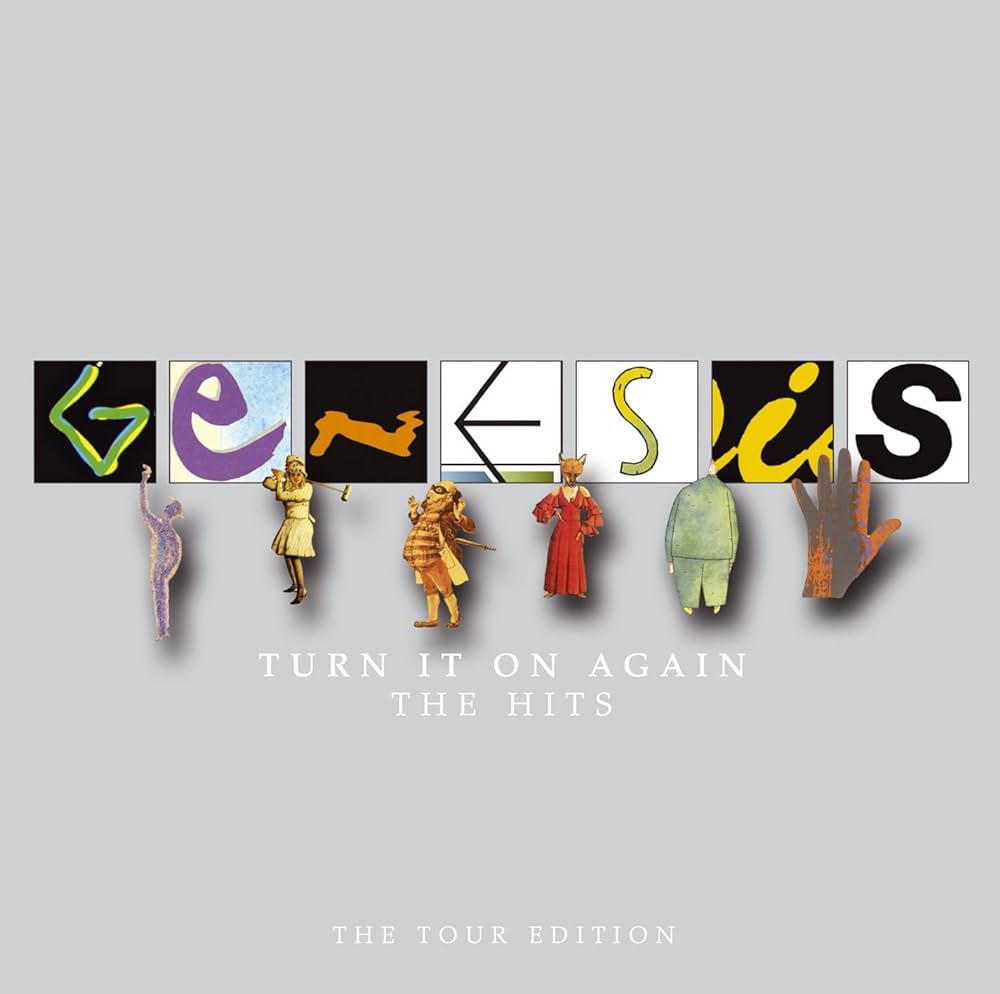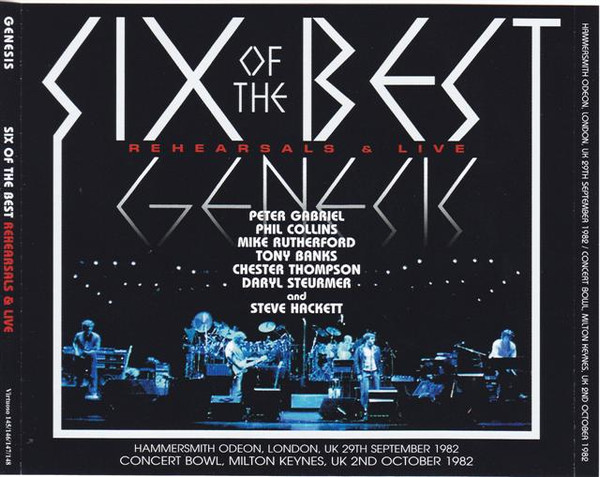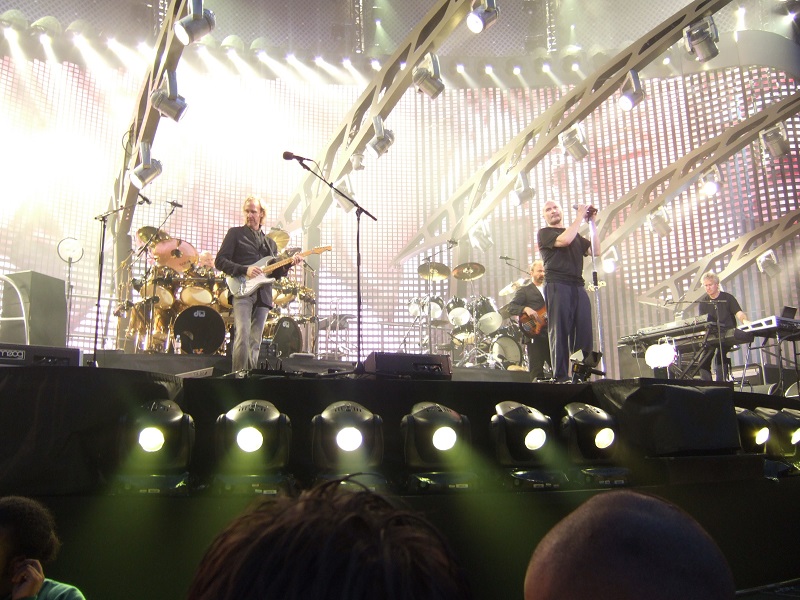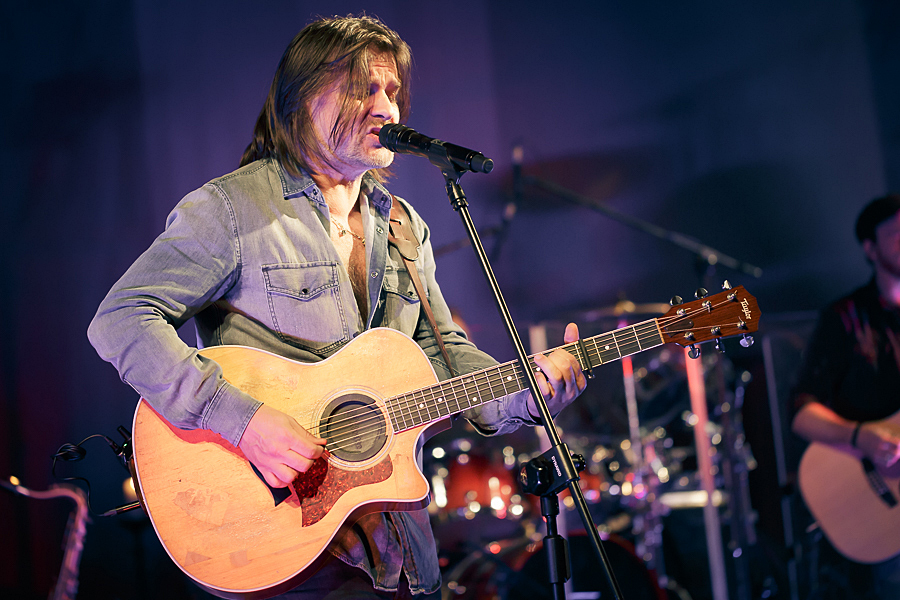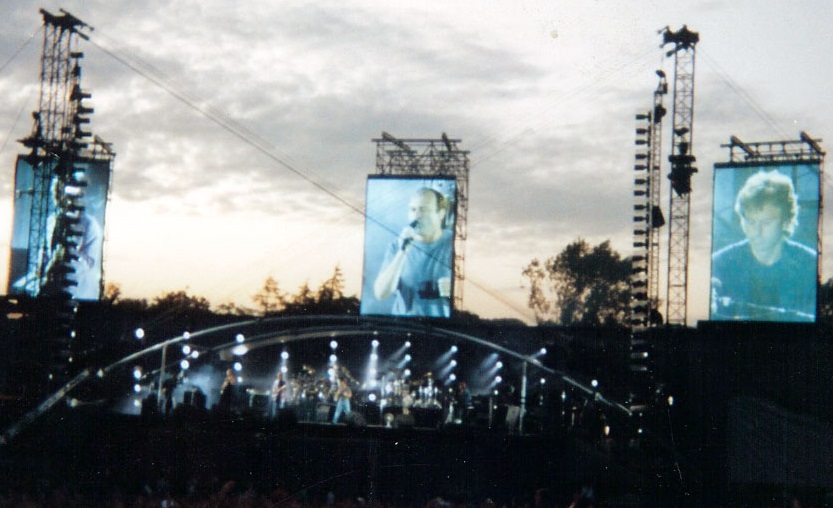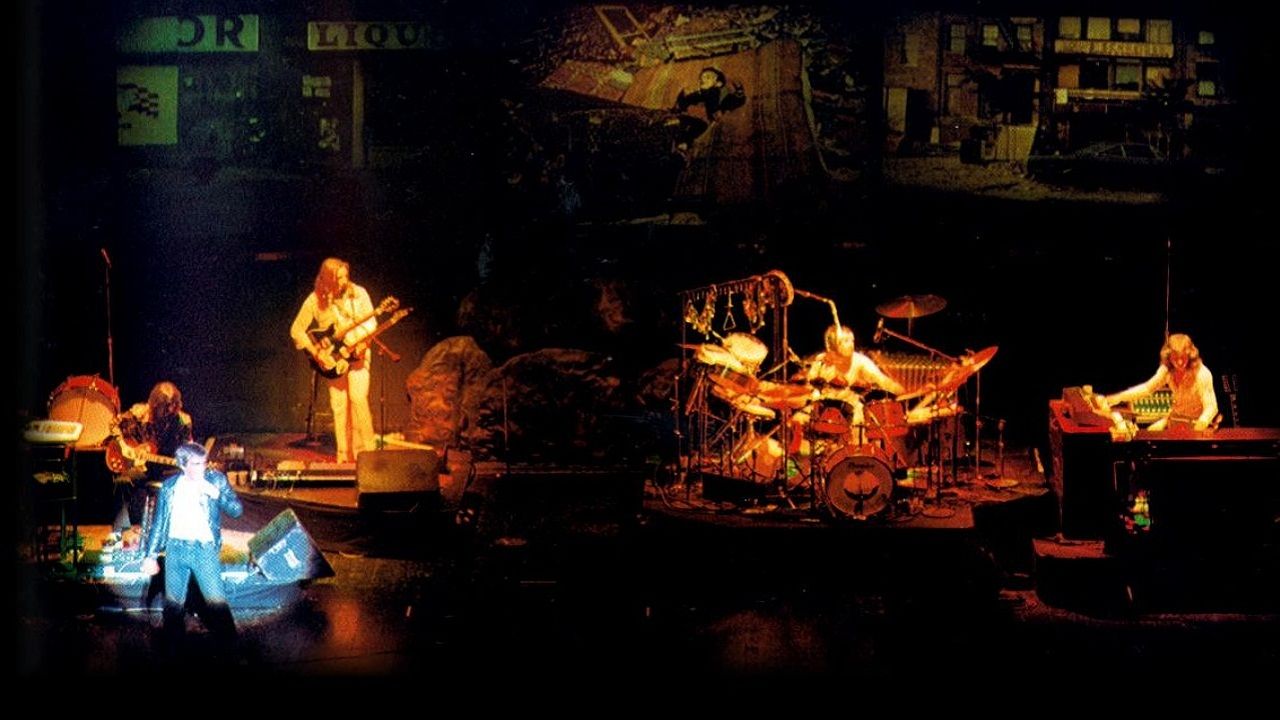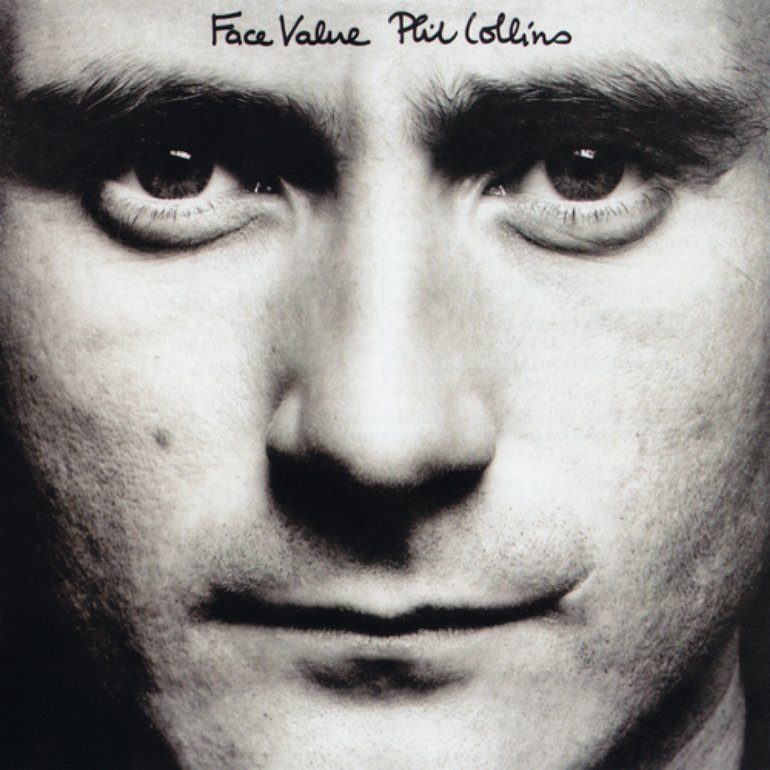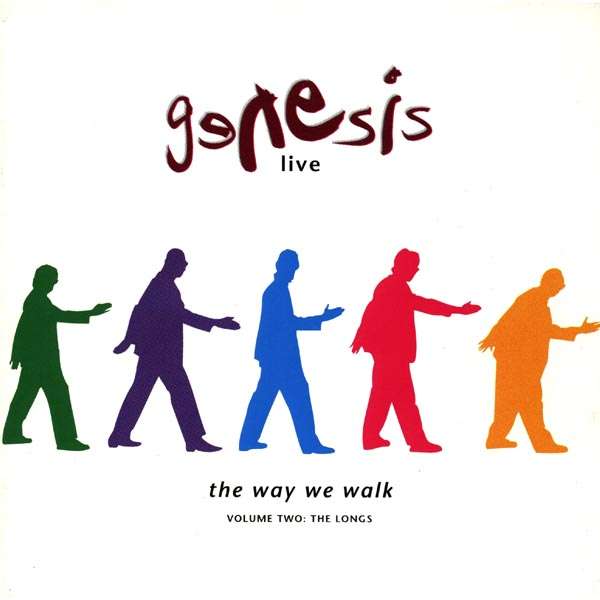On November 21, 1982, Phil Collins embarked on a bold new chapter in his career: his first-ever solo concert. Held in Den Haag, Netherlands, this performance marked the start of his Hello, I Must Be Going! tour, a tour that defined his journey from Genesis drummer and vocalist to a global solo star.
Continue reading “Phil Collins’ First Solo Concert”November 7, 2006: Genesis reunite for the ‘Turn It On Again’ Tour 2007
On November 7, 2006, Genesis fans received long-awaited news during a press conference at the May Fair Hotel in London. Tony Banks, Phil Collins, and Mike Rutherford—the trio that had propelled Genesis to global stardom—announced their reunion for the Turn It On Again tour, set for 2007. It marked the first time in 14 years that Collins, who had stepped away in 1996, would join his bandmates on stage. Chester Thompson and Daryl Stuermer, long-standing touring members, were also set to return, cementing a lineup familiar to fans of the group’s 1980s and 1990s peak.
Continue reading “November 7, 2006: Genesis reunite for the ‘Turn It On Again’ Tour 2007”Six Of The Best
On October 2, 1982, the legendary ‘Six Of The Best’ reunion show with Peter Gabriel and Genesis took place at Milton Keynes.
Continue reading “Six Of The Best”The End of the Invisible Touch Tour – Wembley, July 4, 1987
On July 4, 1987, Genesis wrapped up their massive Invisible Touch tour with the fourth consecutive sold-out show at Wembley Stadium. It marked the end of a historic run for the band and a high point in their live career.
Invisible Touch: The Album
Released in 1986, Invisible Touch became Genesis’ most commercially successful album, reaching #1 in the UK and #3 in the US. It produced five major hit singles: ‘Invisible Touch’, ‘Tonight Tonight Tonight’, ‘Land of Confusion’, ‘In Too Deep’ and ‘Throwing It All Away’. Tracks like the title song, the moody Tonight, Tonight, Tonight, and Land of Confusion with its iconic Spitting Image video dominated radio, MTV, and the charts throughout 1986 and 1987. Genesis had never been more visible – or more popular.
Naturally, the band embarked on a massive world tour, playing across North America, Australia, Japan, Europe, and finally closing with four sold-out nights at Wembley, playing to nearly 300,000 people.
The Invisible Touch Tour
The tour kicked off in September 1986 in the US and included 112 shows, selling close to two million tickets. The band was joined, as usual, by drummer Chester Thompson and guitarist/bassist Daryl Stuermer.
In Australia and New Zealand, Genesis added a local four-piece string section for In Too Deep and Your Own Special Way, due to union regulations requiring them to employ local musicians.
By this point, Genesis weren’t just a hit-making machine, they were a finely-tuned live band, backed by a state-of-the-art Vari-Lite lighting system and a tight, polished setlist. While they had a vast catalogue to choose from, the shows leaned heavily on songs from Invisible Touch and recent albums.
The Setlist and Show Highlights
Every show opened with Mama, though its eerie atmosphere did not always translate well in daylight stadium settings. The closer was the now-iconic Turn It On Again medley, which featured a whirlwind of rock classics: Everybody Needs Somebody to Love, Satisfaction, Twist and Shout, Pinball Wizard, All Day and All of the Night and Karma Chameleon.
Older fan favorites included: Los Endos, Home By The Sea (with its now-standard ghost-story intro) and the In The Cage medley.
At the beginning of the tour, the In the Cage medley included In That Quiet Earth and the second half of Supper’s Ready. But as the tour progressed, Phil Collins began having trouble hitting some of the higher notes in Supper’s Ready, and the band eventually returned to the familiar In That Quiet Earth / Afterglow ending.
New material from Invisible Touch featured heavily, with standout performances of: Domino (with Phil’s now-legendary audience interaction), Tonight, Tonight, Tonight, Throwing It All Away (where the crowd singalong grew with each night) and Invisible Touch.
Live at Wembley Stadium
‘Nearly 300,000 people at Wembley. OK, there might have been a few repeats in there, but I thought at the time, and I still think now, that moment was the peak of our career’1 – Tony Banks.
By the time Genesis arrived at Wembley, the band had performed the set so often it had become a masterclass in musicianship and stagecraft. Initially, only two nights at Wembley were planned, but due to overwhelming demand, two more were added, making Genesis the first band to play four sold-out shows at Wembley Stadium. They entered the Guinness Book of Records, a record later broken by Michael Jackson during his Bad tour in 1988.
The Wembley concerts were filmed and later released on VHS and DVD (2003). Unfortunately, the epic In the Cage medley did not make it into the final release, (allegedly) due to bad luck with tape changes during that very song on each night.
Even so, the performance captured at Wembley is phenomenal, showcasing Genesis at their live peak. With Invisible Touch, the band had reached global superstardom and Wembley was the victory lap.
After this triumph, fans would have to wait four more years for the next Genesis studio album.
Title photo: Genesis Nancy 1987. Phil Collins, Tony Banks, Mike Rutherford, Daryl Stuermer, Chester Thompson. Genesis en concert à Nancy le 14 juin 1987 au stade Marcel-Picot de Nancy-Tomblaine Source: Wikimedia Commons, Fredamas / CC-BY-SA-2.5 (https://creativecommons.org/licenses/by/3.0).
- in Banks, Tony; Collins, Phil; Gabriel, Peter; Hackett, Steve; Rutherford, Mike; Dodd, Philip, Genesis. Chapter & verse. (New York: Thomas Dunne Books/St. Martin’s Griffin, 2007), p. 287. ↩︎
The ‘Turn It On Again’ Reunion Tour
On 11 June 2007, Genesis kicked off their long-awaited ‘Turn It On Again’ reunion tour in Helsinki, marking the official return of Phil Collins as lead vocalist.
The Reunion Announcement
On 7 November 2006, Tony Banks, Mike Rutherford and Phil Collins held a press conference to announce that Genesis would reunite for a European summer tour in 2007, followed by a North American leg in the autumn. It was the first time Collins had officially rejoined the band since leaving in 1996, despite a few brief appearances over the years.
Joining them on stage were longtime touring members Chester Thompson (drums) and Daryl Stuermer (guitar/bass), both of whom had not performed with Genesis since the We Can’t Dance Tour in 1992.
Rehearsing After 15 Years
The band’s first full show was scheduled for 11 June in Helsinki. With no new album to promote, Genesis had the freedom to revisit their extensive back catalogue. But rehearsing after a 15-year hiatus came with unexpected challenges.
Tony and Mike not only had to relearn many of the songs, they also had to transpose them to accommodate Phil’s deeper vocal range. Phil, in turn, had to reacquaint himself with lyrics, particularly those written by Tony Banks, which he had always found tricky. Songs like “Domino” and “Home By The Sea” with lines such as “Sheets of double glazing” or “Nylon sheets and blankets” had always tested his memory.
Listening back to past live performances, Phil noticed how often he had deviated from the original songs. For this tour, he made a conscious effort to stick to the original versions.
On top of that, he had to get back into Genesis drumming shape. While he had continued to play on solo tours, most notably during “In the Air Tonight”, tackling complex pieces like “Second Home By The Sea” required serious effort. Thankfully, Chester and Daryl were there to support the process, with Daryl even helping Tony and Mike remember their own parts.
Despite the time apart, the old chemistry was still intact. In fact, the dynamic between the three had improved. Tony and Mike had mellowed with age, while Phil had grown more serious. This allowed them to communicate more openly, discussing things they wouldn’t have dared bring up 15 years earlier.
The Setlist
Genesis had a vast library of music to choose from and the setlist reflected that. Fan favourites like “Follow You Follow Me”, “Invisible Touch”, “Mama”, and “I Can’t Dance” were all included.
One highlight was a heavier version of “Land of Confusion”, clearly influenced by Disturbed’s popular metal cover. It gave the song a modern edge and fresh energy.
The band also included more intricate tracks from the later years, such as “Domino” and “Home By The Sea”, two of Tony Banks’s personal favourites. They opened the show with a medley titled “Duke’s Intro”, combining the instrumental from “Behind the Lines” with a section of “Duke’s End”. It made for a powerful, dramatic opening that set the tone for the entire night.
Phil played more drums than he had on previous tours, and for “I Know What I Like”, he even brought back the iconic tambourine dance from 1976, something he had to rehearse again after years off.
Two surprises in the setlist were “Ripples”, from 1976’s A Trick of the Tail (Phil’s first album as lead vocalist), and a fragment of “Duke’s Travels”, which was folded into a medley. In fact, the set covered nearly every album from 1973 onwards. Each show ended on a high note with the emotional “Carpet Crawlers”, a beloved classic from The Lamb Lies Down on Broadway.
Behind the Scenes
Stage design for the tour was handled by the legendary Mark Fisher, while Patrick Woodroffe created a stunning lighting design. A massive screen behind the band displayed visuals tailored to each song, giving every track a unique atmosphere.
Nick Davis oversaw the live sound, and the band partnered with the Encore Series to offer high-quality soundboard recordings of every show, making each concert available to fans.
Opening Night in Helsinki
The tour kicked off in Helsinki on a warm summer night. The band delivered a flawless performance, the visuals hit every cue, and fans were thrilled to see Genesis live once again.
Phil would later reflect that while many had hoped for a new Genesis album, the ‘Turn It On Again’ tour felt more like a farewell than a comeback. The band continued through North America in the autumn before bringing the curtain down.
Looking back, all involved agreed: the best part of the tour wasn’t just the music, it was the joy of being back with old friends and laughing together again.
Photo: Genesis, ofwel: Phil Collins, Michael Rutherford, Tony Banks, Chester Thompson en Daryl Stuermer.}} |Source=Maikel Koek, via Wikiportrait |Date= |Author=Maikel Koek |Permission={{Wikiportrait|2008041010026495}} (https://creativecommons.org/licenses/by/3.0).
Ray Wilson Announced as New Genesis Frontman
On June 6, 1997, Tony Banks and Mike Rutherford announced the new lead singer of Genesis following Phil Collins’ departure: 28-year-old Ray Wilson.
When Phil Collins revealed in March 1996 that he would be leaving Genesis after 25 years, fans were eager to learn who would step into his shoes. Genesis had already weathered the departure of their original frontman, Peter Gabriel, back in 1975. Now, two decades later, Tony Banks (keyboards) and Mike Rutherford (guitars), the remaining founding members, were determined to carry on once more.
They began writing and recording new material, searching for a vocalist who could help them shape the band’s next chapter. Rumors swirled in the music press, speculating about possible replacements. Then, on June 6, 1997, it was official: Ray Wilson would be the new voice of Genesis.
Who is Ray Wilson?
Born in Dumfries, Scotland, on September 8, 1968, Ray had previously fronted the band Guaranteed Pure and was best known for his work with Stiltskin, whose hit single “Inside” reached number one in 1994, thanks in part to its use in a Levi’s commercial. So, while Ray wasn’t an unknown figure in music, the stylistic gap between Stiltskin and Genesis left both his fans and Genesis fans surprised and cautious.
Reflecting on the moment in the Songbook DVD, Ray recalled:
‘I was in my little studio writing songs. It was ten in the morning, I was making a coffee, and Tony Smith, the manager of Genesis, was on the phone: ‘Would you like to come and audition to replace Phil Collins?”
By then, Phil Collins’ massive solo success had blurred the public’s perception of Genesis. It was often seen as “Phil Collins and his band”. Taking over that role and shifting that image would be no easy task.
Calling All Stations
Ray joined Tony and Mike at The Farm, Genesis’ private studio in Surrey, to begin recording what would become Calling All Stations. Most of the songs had already been written by Banks and Rutherford, but Ray contributed several ideas of his own. The result was a darker, more melancholic record. The vibrant energy and accessible pop sensibility Phil had brought to the group were now absent, and with it, part of the familiar Genesis chemistry.
Still, Ray’s emotionally rich vocals suited the mood of the new material. His voice, more reminiscent of Peter Gabriel than Phil Collins, blended well with the brooding tone of the songs. Calling All Stations, like its predecessor We Can’t Dance, was produced by Nick Davis.
Three singles were released from the album: “Congo”, “Shipwrecked”, and “Not About Us”. Ray co-wrote the latter, along with “Small Talk” and “There Must Be Some Other Way.” Drums on the record were provided by Israeli session musician Nir Zidkyahu and Nick D’Virgilio from American prog-rock band Spock’s Beard.
Despite Ray’s strong performance, critics were less than kind. NME wrote dismissively that “the world doesn’t care enough about Genesis to make the effort” and claimed people had “forgotten why they were once any good.” Q magazine criticized the album for offering “just darkness, confusion, individual isolation,” calling it “one-paced and one-dimensional.”
Live in 1998: Ray on Tour
On tour, however, Ray proved his versatility. The setlist spanned the entire Genesis catalog from the pop-era hits like “Invisible Touch”, “No Son Of Mine”, and an acoustic version of “Follow You Follow Me”, to later epics such as “Home by the Sea”, and even classic Gabriel-era tracks like “Carpet Crawlers” and “The Lamb Lies Down on Broadway.” New material from Calling All Stations also held up well live. Some songs, like the title track, even sounded better on stage.
Ray, Mike, and Tony were joined on tour by Nir Zidkyahu on drums and Anthony Drennan on guitar and bass, effectively filling the shoes of Chester Thompson and Daryl Stuermer.
Commercial Struggles
Despite reaching No. 2 in the UK, Calling All Stations underperformed in the U.S., peaking at just No. 54. Ticket sales also fell short of expectations. As a result, the production and scale of the tour were scaled back and the planned American leg was cancelled entirely.
After the 1998 tour, Tony Banks and Mike Rutherford decided to put Genesis on indefinite hold.
Looking Back
Although this wasn’t the end of Genesis, in 1998 it certainly felt like it. And sadly, Ray Wilson, thrust into a difficult situation, was unfairly blamed by some critics and fans for the band’s lack of commercial success during this era.
But this criticism doesn’t hold up. Ray brought a unique voice and delivered both the new material and the classics whether originally sung by Peter Gabriel or Phil Collins with emotion and distinction.
Following the end of Genesis, Ray took time to regroup before launching a solo career. He has since released several solo albums and continues to perform live, often including Genesis songs in his setlists.
Title photo: Ray Wilson live in Dortmund in 2017 (Photo: André Wilms of ‘The Photography Of Mister Ilms)‘.
We Can’t Dance in Tampa – The Story of the 1992 Tour
Tampa, Florida, 17 May 1992. It was only the fourth night of Genesis’ massive We Can’t Dance tour when the band had to leave the stage early after just two songs. Phil Collins was suffering from throat problems, and the show was cancelled after Land of Confusion and No Son of Mine, leaving a restless crowd behind. Thankfully, it was a one-off incident. The We Can’t Dance tour would go on to become one of the band’s biggest productions ever, both in scale and ambition.
Let’s take a closer look at this monumental tour.
A Blockbuster Album: We Can’t Dance
Released in 1991, We Can’t Dance was Genesis’ 14th studio album and it became another global smash. Even after nearly 25 years in the business, the band were still topping charts around the world. The album spawned four hit singles: No Son of Mine, I Can’t Dance, Hold On My Heart, and Jesus He Knows Me. Each of them came with its own high-budget music video. I Can’t Dance and Jesus He Knows Me, in particular, stood out for their sharp humour and clever production.
Stadiums, Screens, and Scale: The We Can’t Dance Tour
Naturally, such a successful album deserved a tour to match. More than 60 shows were scheduled across North America and Europe in 1992. While Genesis weren’t entirely comfortable with stadium gigs, they ultimately preferred three months of large-scale shows over a ten-month arena tour. The goal was clear: keep the tour tight and efficient.
The production went up a notch: three massive Sony Jumbotron video screens were installed behind the stage, ensuring that fans even in the furthest rows could see the band up close. Rehearsals took place inside the enormous Goodyear Blimp hangar in Houston, one of the few places big enough to house the full setup.
The Setlist and the Line-Up
Tony Banks, Phil Collins, and Mike Rutherford were joined once again by their trusted touring musicians Chester Thompson (drums) and Daryl Stuermer (guitar and bass). After weeks of rehearsals, the setlist came together: mostly material from We Can’t Dance, along with select tracks from Invisible Touch and Genesis, and of course the classic encore Turn It On Again.
A 20-minute medley brought back highlights from the band’s 1970s output. It was a refreshing change from the long-standing In the Cage medley, which had featured in live shows for years.
Trouble in Tampa
The tour kicked off on 8 May 1992 in Texas. But disaster struck on night four in Tampa. Phil Collins’ voice simply gave out. He had always taken care of his voice while on tour, using various treatments when needed and he knew the crowd could sing along if he had to take it easy. But this time, he just couldn’t go on. After Land of Confusion and No Son of Mine, the band had no choice but to walk off stage.
Fortunately, Phil recovered quickly, and the rest of the tour went ahead as planned. The first leg concluded in August with a massive open-air concert at Knebworth Park, which was broadcast on Premiere. The second leg kicked off in the autumn, taking the band across the UK, a region they hadn’t toured extensively during the 1980s. They made up for it with multiple dates at London’s Earl’s Court, which were filmed and later released as The Way We Walk: Live in Concert.
The Way We Walk – Capturing the Tour
The tour also resulted in a live double album: Live – The Way We Walk, split into two volumes — The Shorts and The Longs. Rather than presenting an entire show in sequence, the band divided the material into their hit singles and their longer, progressive epics. Some fans didn’t love this format, but it made sense at the time: casual listeners knew the hits, while long-time fans appreciated the deeper cuts. Later editions of the album would restore the original running order.
The Last Dance (For a While)
Unbeknownst to fans and band members alike, the We Can’t Dance tour would be the last Genesis tour with Phil Collins until the 2007 reunion. It was also the final tour for Chester Thompson and Daryl Stuermer, at least for the next 15 years.
No one knew it at the time, but this was the end of an era. For many fans, 1992 was the last chance to see this iconic lineup live. But, as Genesis fans now know, there was more to come — eventually.
Title photo: Genesis Live- Land Of Confusion. Photo taken during the performance by Genesis of “Land of Confusion” in Knebworth, England (August 2nd, 1992). Source: Wikimedia Commons, Manny Hernandez/ CC-BY-SA-2.5 (https://creativecommons.org/licenses/by/3.0).
Genesis’ Induction into the Rock and Roll Hall of Fame (2010)
On March 15, 2010, Genesis was inducted into the Rock and Roll Hall of Fame. Phil Collins, Mike Rutherford, Tony Banks, and Steve Hackett attended the ceremony, accompanied by long-time live members Chester Thompson and Daryl Stuermer. Peter Gabriel, however, chose not to attend. The band was introduced by Phish frontman Trey Anastasio.
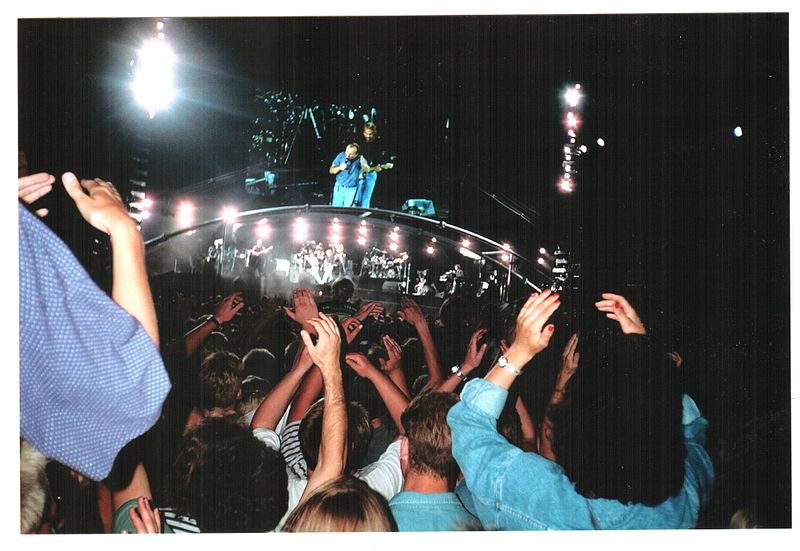
Phil Collins’ Health Issues Following the ‘Turn It On Again’ Tour
By the time Genesis received this honor, they had already been on hiatus for three years. Their last tour, Turn It On Again, took place in 2007, featuring Collins, Rutherford, and Banks, along with Stuermer and Thompson. The tour was a massive success, but it came at a cost.
During the tour, Phil Collins began experiencing numbness in his left arm and fingers while drumming. It was later revealed that he had suffered severe nerve damage in his neck and back – likely a result of decades of drumming. With his ability to play drums compromised, the prospect of future Genesis live performances seemed highly unlikely.

Would Peter Gabriel Reunite with His Former Bandmates?
As news of Genesis’ induction spread, speculation ran wild. Would all former members attend? Would Peter Gabriel make a surprise appearance? Would they even perform together?
The answer was a clear no. Gabriel was preparing for his own tour and opted out of the ceremony. Over the years, he had distanced himself from Genesis, having left the band in 1975 to embark on a highly successful solo career. He had no interest in rekindling the past and, to put an end to the rumors, simply stayed away. However, the other four core members – Banks, Rutherford, Collins, and Hackett – were present, along with their families and longtime touring musicians Stuermer and Thompson.
The induction speech was delivered by Trey Anastasio of Phish.
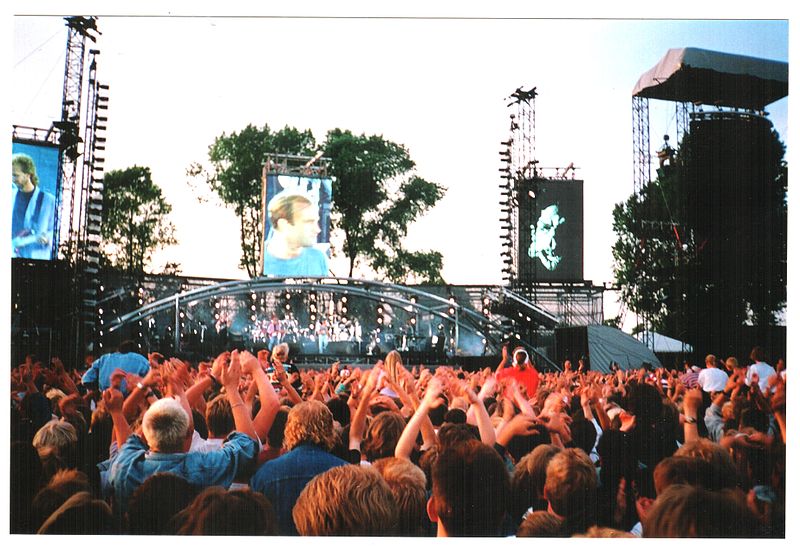
Phish’s Performance: Two Unusual Genesis Songs
Phish performed two Genesis songs that evening: Watcher of the Skies and No Reply at All – one from each era of the band, yet both somewhat unconventional choices. Interestingly, they seemed to struggle more with the ‘pop’ track No Reply at All than with the complex, progressive Watcher of the Skies.
Trey Anastasio’s speech was a highlight of the night. Rather than rehashing well-known Genesis anecdotes, he provided a musician’s perspective on the artistry behind Trespass, Selling England by the Pound, and Duke. His speech was a fitting tribute, emphasizing that Genesis wasn’t being honored merely for their commercial success, but for their musicianship and innovation.
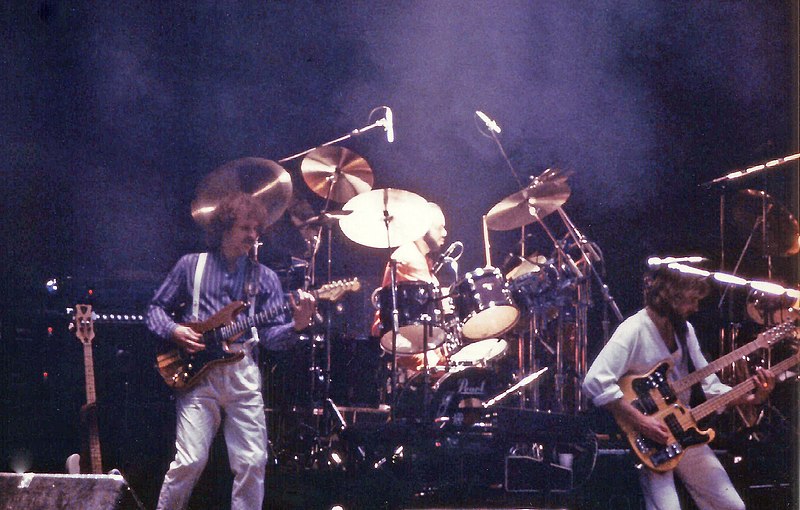

A Bittersweet Moment for Genesis Fans
When the four classic members took the stage, Rutherford, Collins, and Hackett each shared a few words. (Hackett’s speech, admittedly, was a bit awkward.) Rutherford acknowledged Gabriel’s absence, explaining that he was busy preparing for an orchestral tour.
Later, Phil Collins admitted he was actually relieved that Gabriel hadn’t attended – otherwise, the night would have been overshadowed by inevitable questions about a possible reunion. The induction felt like a final chapter in Genesis’ long and storied career, a celebration rather than a new beginning.
Unbeknownst to fans at the time, this would be the last public appearance of Genesis for many years – and also the final time Chester Thompson would stand alongside them.
Trey Anastasio summed it up best when he described Genesis as ‘rebellious, restless, and constantly striving for something more.’ Few statements could better encapsulate the essence of their career.
Title photo: Genesis on stage during the The Lamb Lies Down On Broadway tour, 1974-75. Source: Wikimedia Commons, Nick Contador/ CC-BY-SA-2.5 (https://creativecommons.org/licenses/by/3.0).
First photo: Genesis live, July 29th, 1992 Kiel, Germany. The Nordmarksportfeld. Source: Wikimedia Commons, Derzsi Elekes Andor/ CC-BY-SA-2.5 (https://creativecommons.org/licenses/by/3.0).
Second Photo: The Way We Walk – The Shorts (Cover).
Third photo: Genesis live, July 29th, 1992 Kiel, Germany. The Nordmarksportfeld. Source: Wikimedia Commons, Derzsi Elekes Andor/ CC-BY-SA-2.5 (https://creativecommons.org/licenses/by/3.0).
Fourth photo: Daryl Stuermer, Chester Thompson and Mike Rutherford, Liverpool Empire, Duke Tour 1980. Source: Wikimedia Commons, Rodhullandemu/ CC-BY-SA-2.5 (https://creativecommons.org/licenses/by/3.0).
Fourth photo: Genesis, Phil Collins, Strasbourg, October 1981. Source: Wikimedia Commons, Philippe Roos from Strasbourg/ CC-BY-SA-2.5 (https://creativecommons.org/licenses/by/3.0).
Face Value (1981) – Phil Collins
In February 1981, Phil Collins unveiled his debut solo album, Face Value, marking a significant departure from his role as Genesis’s frontman. The album not only showcased Collins’s personal and musical evolution but also cemented his status as a prominent solo artist in the 1980s.
Genesis and Personal Turmoil
By 1978, Collins had transitioned from Genesis’s drummer to its lead vocalist. The band’s 1978 album, …And Then There Were Three…, featured the hit “Follow You Follow Me,” signaling a shift towards more concise and direct songs. During this period, Collins faced personal challenges; his wife, Andrea, threatened to leave due to his extensive touring commitments. Upon returning from a tour, Collins discovered that Andrea had moved to Canada with their children. Despite efforts to reconcile, including a move to Vancouver, the marriage ended in divorce.
Creation of Face Value
In the aftermath of his divorce, Collins channeled his emotions into music. He set up a home studio in Surrey, equipped with a piano, drum machine, and an 8-track tape recorder. Here, he began crafting demos that delved into his personal experiences. When Genesis regrouped to work on their 1980 album, Duke, Collins presented some of these demos. Two tracks, “Misunderstanding” and “Please Don’t Ask,” were included in the album. Encouraged by the positive reception, Collins decided to pursue a solo project, collaborating with producer Hugh Padgham to develop his demos into a full-length album.
Musical Diversity and Notable Tracks
Face Value is a tapestry of various musical styles, reflecting Collins’s diverse influences. The opening track, “In the Air Tonight,” is renowned for its haunting atmosphere and the iconic drum break that has since become legendary. The song’s lyrics were largely improvised, capturing the raw emotion of the moment.
Another standout track, “I Missed Again,” introduces a brass section featuring the Phenix Horns, known for their work with Earth, Wind & Fire. This collaboration infused the song with a vibrant, funky energy, a sound that would become a hallmark of Collins’s future solo endeavors.
The album also explores a range of genres:
“The Roof Is Leaking”: A track with Delta blues and country influences, adding to the album’s eclectic nature.
“You Know What I Mean”: A poignant ballad showcasing Collins’s vulnerability, accompanied solely by piano and vocals.
“Hand in Hand”: An instrumental piece blending jazz and world music elements, highlighting the talents of the assembled musicians.
Commercial Success and Legacy
Upon its release, Face Value received critical acclaim and achieved significant commercial success. The album topped the UK Albums Chart for three weeks and reached No. 7 on the US Billboard 200. It has since sold over 5 million copies in the US and over 1.5 million in the UK. The success of Face Value not only established Collins as a solo artist but also set the stage for a series of successful albums throughout the 1980s.
In retrospect, Face Value stands as a testament to Phil Collins’s ability to translate personal adversity into a universally relatable and sonically diverse album. Its enduring appeal lies in its raw emotion, innovative production, and the seamless fusion of various musical styles.
The Longs (1993) – Genesis
Released in January 1993, Live – The Way We Walk, Volume Two: The Longs marked the end of an era for Genesis. Not only was it the band’s last release with Phil Collins before his departure, but it also became their final UK number-one album. As the second volume of the The Way We Walk live series, The Longs captured the epic and progressive side of Genesis, contrasting with Volume One: The Shorts, which focused on the band’s chart-topping hits.
Continue reading “The Longs (1993) – Genesis”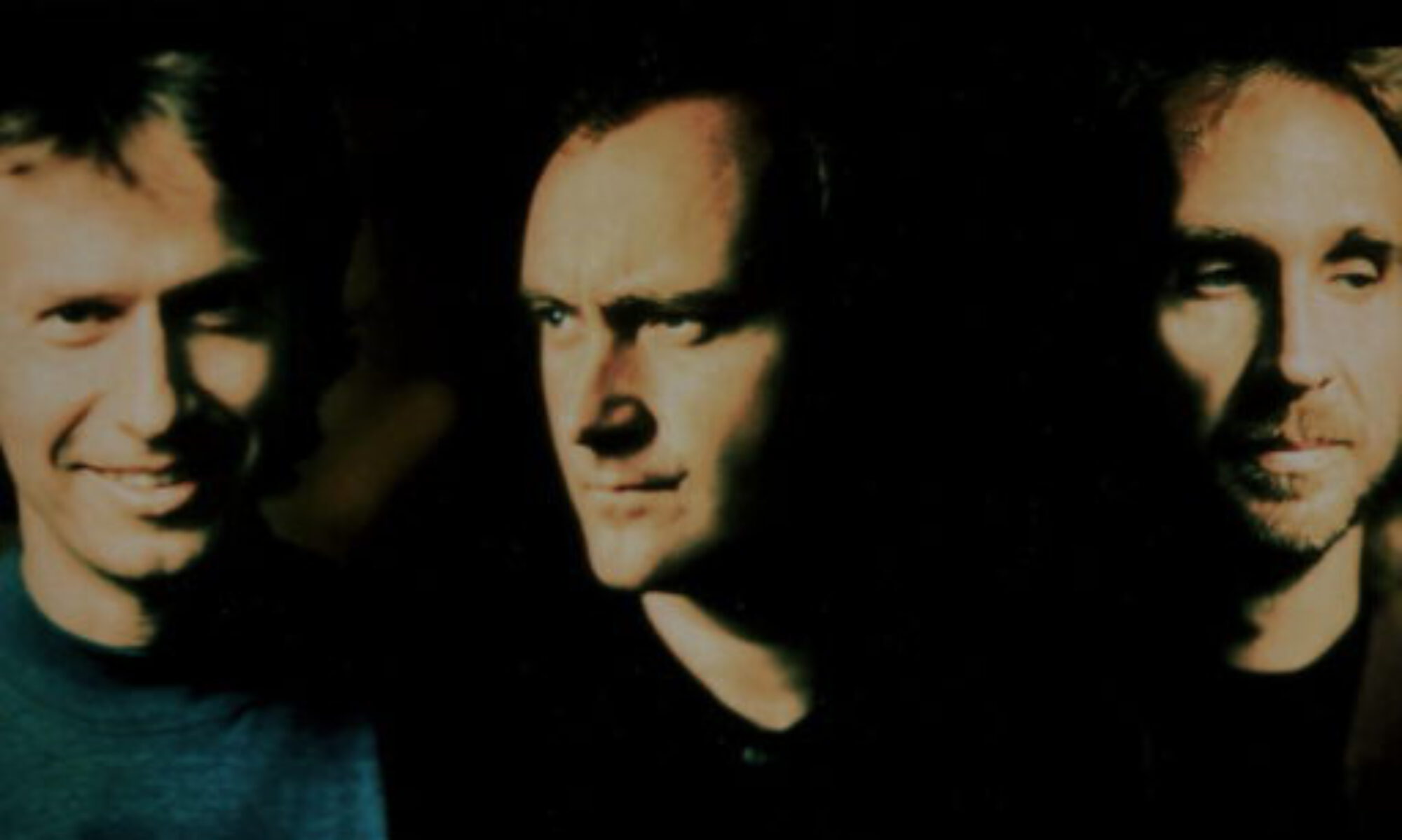
![Phil Collins on the cover of Live at Perkins Palace [1982]](https://genesis-band.com/wp-content/uploads/2024/11/Phil-Collins-on-the-cover-of-Live-at-Perkins-Palace-1982.jpg)
